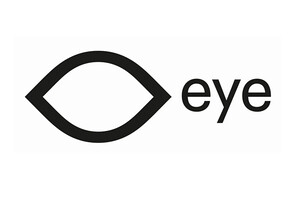March 16–May 19, 2019
This autumn, Eye Filmmuseum is staging a major exhibition of work by four prominent artists: Broomberg & Chanarin, Omer Fast, Chia-Wei Hsu and Meiro Koizumi. Their work explores how stories are shaped and examines arenas of conflict from different points of view.
Truth, facts, memories, reality: are they all constructions? Artists Broomberg & Chanarin, Omer Fast, Chia-Wei Hsu and Meiro Koizumi deploy not only film and video, but also slide projections, photographs and sound to investigate and “unmask” the past. Reportage, re-enactment, documentary and cinematic techniques are some of the strategies that these artists apply to expose the subjectivity of historical sources and the limitations of memory. In stories set in different places around the world, they investigate the construction of narratives and the manner in which stories change when they are told and retold from different perspectives.
The works on display shed light on the history of conflict zones, those places in the world where truth and fiction are brought into sharp focus, and where the smaller histories of individual people often serve to illustrate a larger socio-political reality. Broomberg & Chanarin, Omer Fast, Chia-Wei Hsu and Meiro Koizumi look at how war is represented. Can a war be retold? Is it possible to depict a war? And what is the role of the artist in this regard? These questions act as catalysts for various stories, many of them unknown or forgotten, events that happened in World War II and the Cold War, as well as more recent events in Iraq and Afghanistan.
What unites these artists is their investigative and reflective attitude towards history. They hold historical stories up to the light, though their aim is not necessarily to establish the truth. Their way of working therefore differs fundamentally from a journalistic, legal or scholarly approach. They show that there are multiple perspectives and that the imagination plays a key role in constructing a shared and collective cultural memory. Their works raise questions rather than offer answers to provocative historical issues.
Broomberg & Chanarin
Raised in South Africa and England respectively, artists Adam Broomberg (b. 1970) and Oliver Chanarin (b. 1971) trained as photographers but now work with various media. Their work raises historical, political and religious subjects in a provocative manner. In the process, they grapple with the role of representation, constantly reminding us of the power and many possibilities for interpreting images. The starting point for Dodo (2014) was the representation of war. A combination of archival research, archaeological excavation and unused footage from the film Catch-22 has resulted in an impressive work about the depiction of war and the impact of the Hollywood film industry on the landscape of Mexico. The Day Nobody Died (2008) was made while both artists were embedded with the British army in Afghanistan.
Omer Fast
Contemporary trauma and war are key ingredients in the politically charged films of Omer Fast. Born in Israel in 1972, Fast is interested in the tension between reality and fiction, and he investigates the construction of stories, in particular the way they change when told from different perspectives. In Continuity (2012), a couple are reunited with their son after his military deployment to Afghanistan, but the awkward story soon becomes more complicated. The background to Her Face Was Covered is the evidence of a drone pilot who discusses the bombing of a convoy of trucks at an unspecified location.
Meiro Koizumi
Japanese artist Meiro Koizumi (b. 1976) uses his confrontational videos to break down deep-seated taboos and tackle difficult issues within Japanese society. His consistent body of work centres on recurring subjects such as individual and collective memory, Japanese attitudes towards the past, Japanese media culture, and the depiction of ultimate Japanese heroes such as the samurai and the kamikaze. Defect in Vision (2011) and Portrait of a Young Samurai (2009) offer a disturbing picture of these combatants. The traumas and memories of American veterans of the wars in Iraq and Afghanistan are the subject of Koizumi’s recent work Battlelands (2018).
Chia-Wei Hsu
The Taiwanese artist Chia-Whei-Hsu (b. 1983) examines the cultural history and geopolitics of Asia. He tells forgotten stories as a way of investigating Asian history, important aspects of which are myths and legends. In Huai Mo Village (2012), a priest recalls the time he spied for the CIA to undermine the Chinese communists. In Drones, Frosted Bats and the Testimony of the Deceased (2017), former factory workers reminisce about World War II to images of an abandoned fuel factory in Taiwan, filmed form a drone.
In the Cinemas
Accompanying the exhibition is a programme of films, talks and events in the cinemas. Discussions with artists and presentations of newer and older work provide for a wide contextualizing programme.



